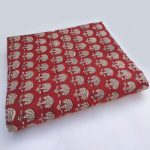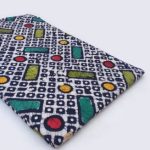Dabu printing is a traditional form of block printing that originated in Rajasthan, India, known for its unique resist dyeing technique. The process involves creating intricate patterns on fabric using a mixture of clay, natural gum, and wheat chaff. This mixture, known as Dabu, is applied to the fabric through hand-carved wooden blocks, which resist the dye when applied later.
After the Dabu mixture dries, the fabric is then dyed using natural dyes, often derived from plants and minerals. The areas covered with Dabu resist the dye, creating patterns and designs with a distinct, slightly blurred edge characteristic of Dabu prints. Once dyed, the fabric undergoes washing and drying processes to remove the Dabu mixture and reveal the final printed design.
Dabu prints typically feature geometric patterns, floral motifs, and traditional Rajasthani designs, reflecting the cultural heritage and craftsmanship of the region. This technique not only produces beautiful textiles but also supports sustainable practices, using eco-friendly materials and natural dyes.
Historically, Dabu printing was practiced by artisans in Rajasthan and Gujarat, catering to local communities and markets. Today, it continues to thrive as a cherished art form, valued for its handmade quality, intricate designs, and eco-conscious production methods.



